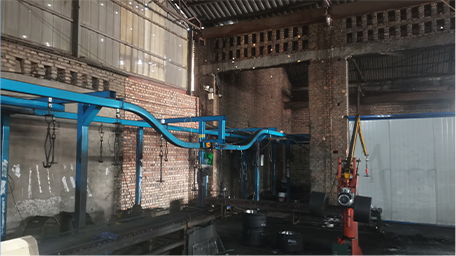დეკ . 07, 2024 14:31 Back to list
brake drum specifications
Understanding Brake Drum Specifications A Comprehensive Guide
Brake drums are crucial components in a vehicle's braking system, primarily found in drum brake systems, which are still widely used in many automobiles, trucks, and other vehicles. Understanding brake drum specifications is essential for ensuring optimal performance, safety, and longevity of the braking system. In this article, we will explore the aspects of brake drum specifications that every vehicle owner and mechanic should know.
1. What Is a Brake Drum?
A brake drum is a cylindrical component that houses the brake shoes, which press against the inner surface to create friction that slows down or stops the vehicle. Brake drums are typically made from cast iron or aluminum alloys, providing the necessary strength and heat dissipation properties.
2. Key Specifications
When examining brake drum specifications, several critical parameters must be considered
a. Diameter The diameter of the brake drum is one of the most pivotal specifications. It influences the drum’s ability to dissipate heat generated during braking and impacts the overall braking performance. Most standard passenger vehicle drums range from 9 to 12 inches in diameter.
b. Width The width of the brake drum is also vital, as it affects the surface area available for the brake shoes. A wider drum can accommodate larger shoes, which can enhance braking performance. Typical widths vary from 1.5 to 3 inches.
c. Material Brake drums are generally made from cast iron due to its excellent heat resistance and affordability. Some high-performance applications might use aluminum or composite materials, which can offer weight savings and improved thermal conductivity.
d. Thickness The thickness of the brake drum is crucial for durability and performance. A thicker drum can withstand more heat and wear before needing replacement. Manufacturers often specify the minimum allowable thickness, known as the discard thickness, which is the point at which the drum should be replaced to ensure effective braking.
e. Venting Some brake drums have built-in venting features designed to improve airflow and cooling. Ventilated drums can dissipate heat more effectively, reducing the risk of brake fade in high-performance situations.
brake drum specifications

3. Performance Considerations
The specifications of brake drums have direct implications for braking performance and safety
a. Heat Dissipation Efficient heat dissipation is necessary to prevent brake fade, which occurs when brakes lose effectiveness due to overheating. Selecting drums with appropriate materials and venting can enhance performance.
b. Compatibility Brake drums must be compatible with their corresponding braking system components, including brake shoes, wheel cylinders, and hydraulic systems. Using mismatched components can lead to uneven wear and ineffective braking.
c. Weight The weight of the drum can influence the overall weight of the vehicle, affecting fuel efficiency and handling. Balance is essential; lightweight drums may enhance performance but could compromise durability.
4. Maintenance and Replacement
Regular inspection of brake drums is crucial for maintaining safety and performance. Here are some key maintenance tips
- Visual Inspection Examine the drums for grooves, cracks, or excessive wear. Any visible damage may necessitate replacement. - Measurement Use a micrometer to measure the diameter and thickness of the drum. If measurements are below specified limits, replacement is required. - Surface Condition Check the surface for signs of warping or scoring, which can affect braking performance. - Brake Shoe Condition Ensure that the brake shoes are also in good condition and replace them as needed.
5. Conclusion
Understanding brake drum specifications is critical for both vehicle owners and professionals in the automotive industry. By paying close attention to the diameter, width, material, thickness, and other specifications, one can ensure that the braking system functions effectively and safely. Regular maintenance and inspection will help identify potential issues early, preserving the integrity and performance of this vital component.
Investing time in understanding these specifications not only enhances vehicle safety but also contributes to the longevity of braking components. Whether you are a seasoned mechanic or a car enthusiast, knowledge of brake drum specifications will empower you to make informed decisions that ensure a safe and enjoyable driving experience.
-
Volvo Brake Drum: OEM Quality, Optimal Safety
NewsAug.27,2025
-
Durable Brake Drum MAZ for Heavy Duty Trucks | High Performance
NewsAug.26,2025
-
FUWA: Premium Quality, Reliable Performance & Innovative Solutions
NewsAug.25,2025
-
Liza Brake Drum: Superior Quality & Performance for Safe Driving
NewsAug.24,2025
-
Iveco Brake Drum | Premium OE Quality for Daily & Eurocargo
NewsAug.22,2025
-
Your Brake Drum Man: Quality & Performance Parts
NewsAug.21,2025
